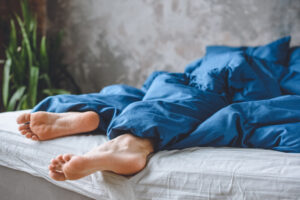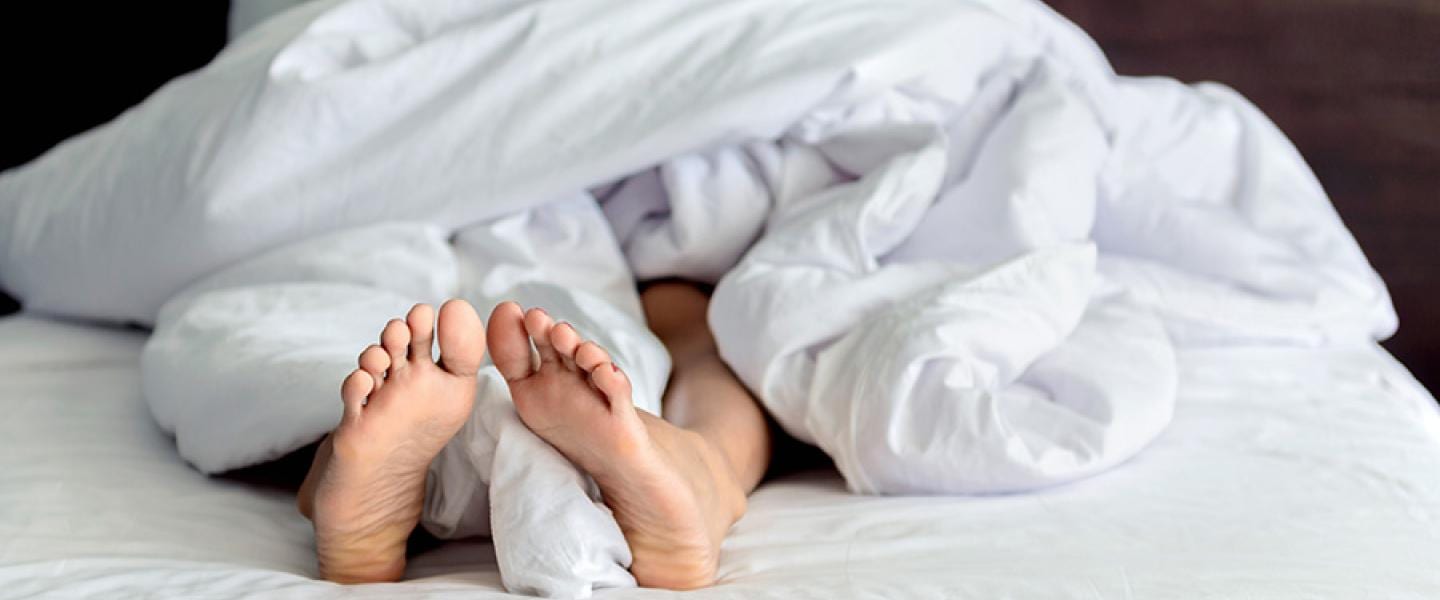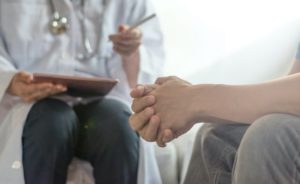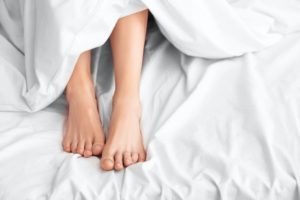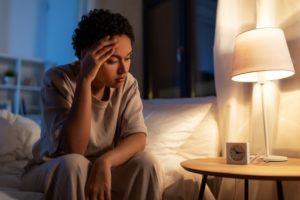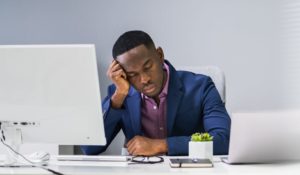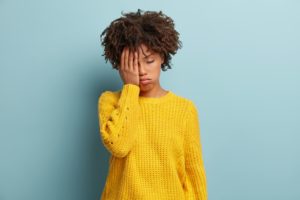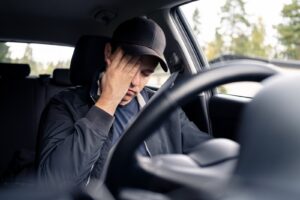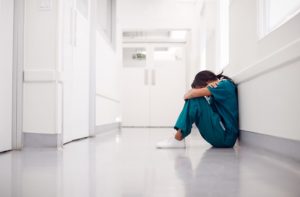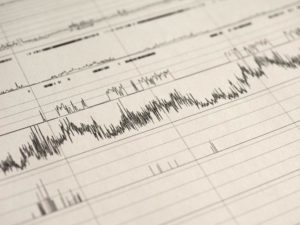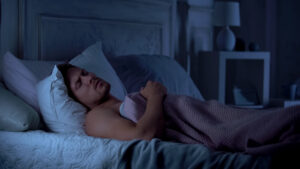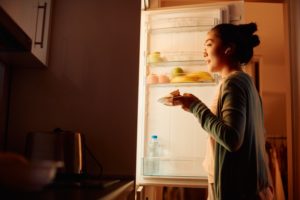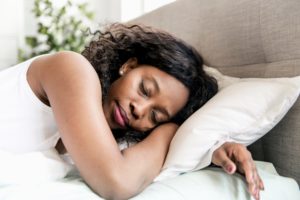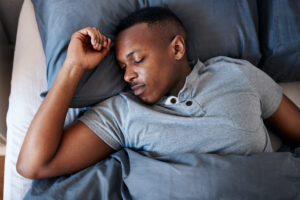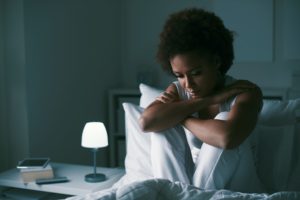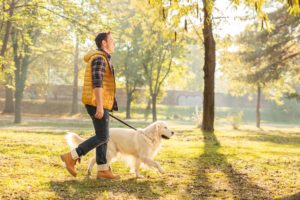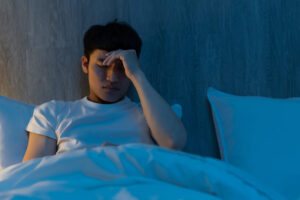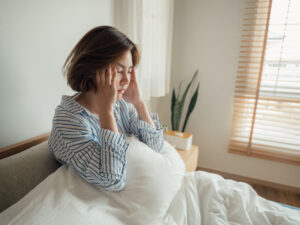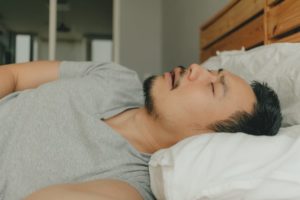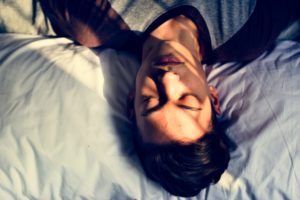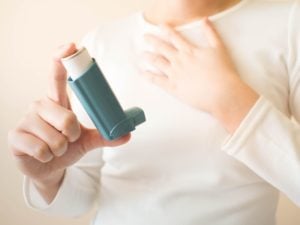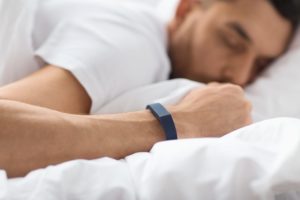When you buy through our links, we may earn a commission. Products or services may be offered by an affiliated entity. Learn more.
What Causes Restless Sleep?
Most people can relate to the experience of restless sleep. Whether it’s tossing and turning or just never settling into deep sleep, you might notice that you don’t feel as refreshed after a night of restless sleep.
Restless sleep isn’t a medical term, but the fact that it’s so relatable makes it worthy of closer consideration. The following sections take a deeper look at what constitutes restless sleep, what causes it, and how it can be addressed.
Causes of Restless Sleep
The possible causes of restless sleep are numerous and diverse. Things that affect your mental and physical state can throw off your sleep, as can sleep disorders or poor sleep habits.
Health Conditions
Various types of health problems can stymie plans for peaceful sleep. Pain, a frequent need to urinate, lung diseases, and heart problems are all examples of conditions that can interrupt sleep. Pain, especially, and the inability to get comfortable in bed, may often be associated with restless sleep.
Stress and anxiety, including formal anxiety disorders, can keep a person’s mind racing and make them feel unable to relax and settle into quality sleep. Grief, sadness, and depression can also influence a person’s mental state in a way that is detrimental to sleep.
Bedtime Habits
Poor sleep habits, which are part of sleep hygiene, are a common cause of insufficient or low-quality sleep. Having an inconsistent sleep schedule, using electronic devices in bed, and eating too late at night are examples of habits and routines that can lead to restless sleep.
Restless or disturbed sleep can also occur because of a misaligned circadian rhythm, which often occurs when working a night shift or suffering from jet lag after flying across multiple time zones.
A bedroom or sleep setting that’s not conducive to good sleep can also contribute to restless sleep. Finding the best mattress for your body type and sleep preferences plays a big role in achieving healthy sleep. An uncomfortable mattress, lots of noise or light, or excess heat or cold may interfere with dozing off or staying asleep.
Caffeine, nicotine, and other stimulants can make the brain and body feel wired and unprepared for sleep. Alcohol and sedatives, even though they cause drowsiness, disrupt normal sleep cycles and can make for a restless night’s sleep even after falling asleep quickly.
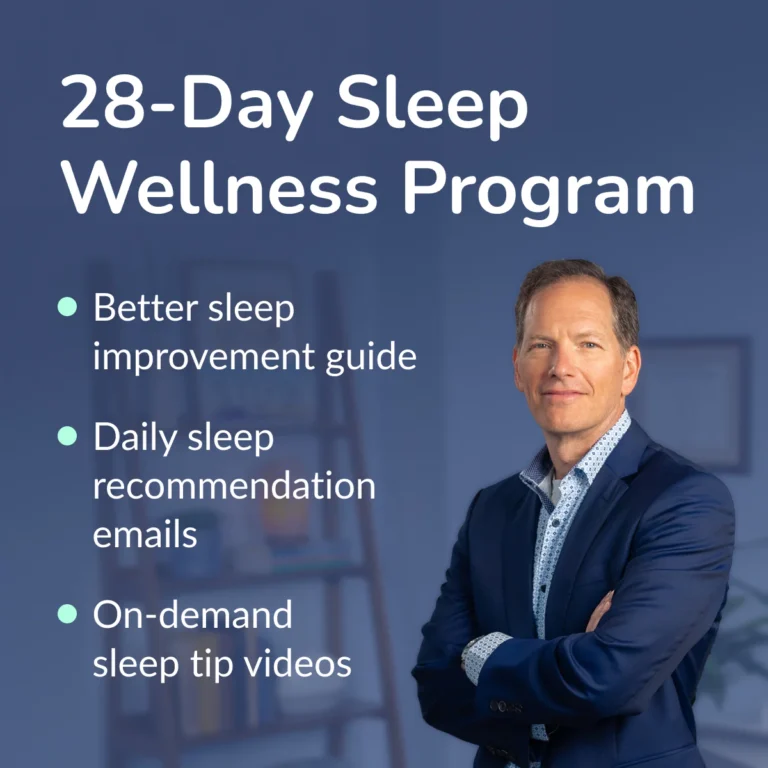
Build Better Sleep Habits in Just 28 Days
Your step-by-step guide to better sleep, created by renowned sleep doctor Michael J. Breus, PhD.
Sleep Disorders
In some situations, restless sleep is tied to an underlying sleep disorder like insomnia, Restless Leg Syndrome (RLS), or sleep-related breathing disorders like obstructive sleep apnea (OSA). In RLS, a person feels a strong urge to move their limbs, and in OSA, breathing is repeatedly interrupted, causing brief awakenings that circumvent the ability to sleep deeply.
Restless sleep that you observe in someone else can be caused by these issues, but it may also be related to other conditions like parasomnias. Parasomnias are abnormal behaviors and movements during sleep including sleep talking, sleepwalking, and acting out dreams.
What Does Restless Sleep Look or Feel Like?
Restless sleep has no concrete definition. It’s not an identified sleep disorder according to the American Academy of Sleep Medicine (AASM), which means that its meaning is subjective. Despite this, there’s a general sense of what it looks or feels like to have restless sleep.
Restless sleep is in the eye of the beholder; how it is perceived depends on whether you’re the one trying to sleep or if you’re observing someone else.
Experiencing Restless Sleep
If you’re the one trying to sleep, restless sleep may involve the following issues:
- Tossing and turning trying to get settled and comfortable
- The feeling of being only half-asleep or that you’re not sleeping deeply
- Constant stirring because your mind is racing
- Frustration with the inability to sleep soundly
- Not being able to fall back asleep quickly after waking up unexpectedly
In addition, a main sign or symptom of restless sleep is often found the next day, when you may feel tired, sluggish, or mentally off. If restless sleep happens regularly, these issues may become increasingly problematic and even dangerous if you’re drowsy while driving or operating heavy machinery.
Observing Restless Sleep
Some things that you may view as restless sleep if you see them in another person include:
- Frequent tossing and turning or waking up without wanting to
- Loud snoring that involves gasping or choking noises
- Notable movement of the limbs, getting out of bed, or even sleepwalking
- Talking or yelling while still sleeping
- Teeth grinding (sleep-related bruxism)
With some of these signs of restlessness, such as talking or moving during sleep, the person is likely to be totally unaware of their behavior and won’t remember it when they wake up. As a result, they may not perceive their sleep to have been restless.
Restless Sleep vs. Insomnia
Unlike restless sleep, insomnia is a formally defined sleep disorder diagnosed by a health professional according to specific criteria. Even though some people use the word insomnia colloquially to refer to general sleeping problems, the term has a precise meaning in sleep medicine.
In practice, the majority of people with insomnia probably experience restless sleep; however, not all people who have restless sleep, especially if it happens only occasionally, have insomnia.
Is Restless Sleep Different By Age Group?
Restless sleep can manifest in different ways based on age. Sleep patterns and sleep needs are different for babies, young children, adolescents, adults, and the elderly, so it’s no surprise that the causes of restless sleep can vary between these groups.
Restless Sleep in Infants
While newborns spend up to 18 hours per day sleeping, they rarely sleep for more than two or three hours at a time. Some parents may perceive this as restless, but it’s both normal and expected .
As babies get to be a few months old, they tend to sleep for longer stretches, frequently adopting a day-night sleep pattern at around six months . But according to one study among 12-month-olds, nearly 28% don’t sleep for six hours consecutively, and 43% don’t sleep for eight hours in a row . As a result, parents should know that the inability to sleep through the night isn’t rare among infants.
To help newborns and infants sleep soundly, parents should cultivate healthy sleep habits. Reinforcing good habits can resolve restless sleep in babies and pave the way for better sleep as they get older. Parents should also carefully follow safety precautions to prevent sudden infant death syndrome (SIDS).
Though uncommon, restless sleep in infants can be caused by an underlying health problem. Sleep apnea, a breathing disorder, can affect infants, but primarily occurs in preterm babies or those with a low birth weight , or those with underlying medical conditions. Parents who notice abnormal breathing or have other concerns about their baby’s sleep should talk with their doctor.
Restless Sleep in Toddlers
In toddlers, restless sleep may reflect an inability to self-soothe, calm down, and fall asleep. This may occur at the beginning of the night and/or if they wake up during the night.
Restless sleep in toddlers often initiates at around 18 months and may be the result of separation anxiety, excess stimulation, poor sleep habits, greater ability to walk and talk, or an increased frequency of nightmares.
This restless sleep is usually resolved when parents implement consistent practices that encourage a stable bedtime routine, a fixed schedule, and self-soothing to get back to sleep.
Restless Sleep in Children
Children are more likely to experience parasomnias, which are abnormal behaviors during sleep. These can include sleep talking as well as confusional arousals or sleep terrors during which a child appears partially awake and distressed but is not communicative or responsive. Parasomnias also include sleepwalking, which affects up to 29% of children from 2-13 years of age and excessive nightmares.
While they can be distressing for parents, most parasomnias are not harmful, and it’s generally best to gently comfort a child back to sleep without awakening them. Children very rarely recall the episodes, and they usually occur only sporadically and eventually stop on their own . If parasomnias begin to interrupt sleep, are frequent, or put a child at risk of harm (such as during sleepwalking episodes), then they may require treatment.
When children have daytime impairments like excessive sleepiness, irritability, or affected thinking and attention, the issue should be discussed with a doctor. These symptoms can be related to pediatric obstructive sleep apnea, especially if restless sleep is accompanied by loud or persistent snoring. Daytime impairments from restless sleep can also be tied to Restless Leg Syndrome as well as conditions like attention-deficit/hyperactivity disorder (ADHD) and Autism Spectrum Disorder (ASD) .
Restless Sleep in Teens
A contributing factor to restless sleep in teens is a natural, biological shift in their sleep timing . During adolescence, the body moves toward a later, “night owl” sleep schedule, so teens may appear restless when trying to go to bed early.
Sleep challenges from this changing biology can be exacerbated by stress and anxiety related to school or social life as well as poor sleep habits, such as the use of mobile phones and other electronic devices in bed. As with younger children, teens can be affected by conditions like OSA, RLS, and ADHD that can cause restless or low-quality sleep.
Restless and insufficient sleep in teens is a concern for many reasons. It can affect critical mental and physical development as well as decision-making and the likelihood of engaging in high-risk behaviors . For this reason, persistent restless sleep and daytime symptoms of poor sleep in teens should be discussed with a doctor.
Restless Sleep in Adults
A significant number of adults struggle with restless sleep, and in this age group, a higher percentage of cases may be tied to insomnia, obstructive sleep apnea, and other sleep disorders.
Adults frequently have more co-occurring health problems that cause pain or other disruptions to sleep. Stress, anxiety, and depression can take a toll on sleep in adults. Work, family, and social obligations can decrease time allotted for sleep, and these issues may be worsened by inadequate sleep hygiene.
Like in other age groups, adults should talk with their health professional if they frequently experience restless sleep, if they have loud snoring or breathing disruptions, or if they suffer from daytime effects including drowsiness, fatigue, or difficulty thinking clearly.
Restless Sleep in Seniors
Many of the factors that cause restless sleep in adults apply to the elderly who face additional challenges as well . Many older people have multiple physical and mental health issues and take a greater number of prescription medications, all of which may contribute to restless sleep.
The circadian rhythm of seniors often shifts forward and may lead to waking up earlier than desired in the morning. Older adults spend more time in lighter stages of sleep , making it easier for them to be disrupted and making their sleep feel less restorative. This can occur naturally and because of greater difficulty in getting sufficient daylight exposure, especially for people in managed care facilities.
The confluence of these issues make sleeping problems widespread among older adults, but steps to address underlying conditions and improve sleep hygiene can enable better sleep. Precautions to prevent falls are another component of caring for older adults with restless sleep who may be groggy or disoriented when getting out of bed during the night or in the morning.
What Are the Best Ways To Address Restless Sleep?
Addressing restless sleep depends on its underlying cause. Practicing strategies to fall asleep easily can help prevent tossing and turning, but other steps, including talking to a doctor, may be necessary to stop restless sleep and keep it from becoming a growing problem.
Sleep Hygiene Improvements
In every age group, sleep hygiene can play a critical role in sleep quality. Healthy sleep tips like finding consistency in your sleep schedule, bedtime routines, diet, and exercise are a good starting point. Finding the best mattress for your personal needs, and making your bedroom comfortable with as few distractions as possible, can reduce the chances of having restless sleep.
Keep a Sleep Journal
One way to learn more about your sleep situation is to keep a journal with notes about how well and how long you sleep each night. In the journal, you can make notes about restless sleep and any issues that you feel might be causing it. Tracking your sleep in this way not only provides insight into your sleep patterns but also casts light on potential trends about what is causing restless sleep.
When to Talk to a Doctor
If restless sleep is frequent, persistent, or worsening, it may be a sign of a bigger issue and should be discussed with your doctor. Similarly, signs of excessive daytime sleepiness or other daytime impairment should always be raised with your doctor who can help to identify the most likely cause and most appropriate steps for treatment.

Still have questions? Ask our community!
Join our Sleep Care Community — a trusted hub of product specialists, sleep health professionals, and people just like you. Whether you’re searching for the perfect mattress or need expert sleep advice, we’ve got you covered. Get personalized guidance from the experts who know sleep best.
References
16 Sources
-
American Academy of Sleep Medicine. (2014). The International Classification of Sleep Disorders – Third Edition (ICSD-3). Darien, IL.
https://aasm.org/ -
A.D.A.M. Medical Encyclopedia. (2020, October 2). Bedtime habits for infants and children. MedlinePlus.
https://medlineplus.gov/ency/article/002392.htm -
Gradisar, M., Jackson, K., Spurrier, N. J., Gibson, J., Whitham, J., Williams, A. S., Dolby, R., & Kennaway, D. J. (2016). Behavioral Interventions for Infant Sleep Problems: A Randomized Controlled Trial. Pediatrics, 137(6), e20151486.
https://publications.aap.org/pediatrics/article/137/6/e20151486/52401/Behavioral-Interventions-for-Infant-Sleep-Problems -
Pennestri, M. H., Laganière, C., Bouvette-Turcot, A. A., Pokhvisneva, I., Steiner, M., Meaney, M. J., Gaudreau, H., & Mavan Research Team (2018). Uninterrupted Infant Sleep, Development, and Maternal Mood. Pediatrics, 142(6), e20174330.
https://publications.aap.org/pediatrics/article/142/6/e20174330/37494/Uninterrupted-Infant-Sleep-Development-and -
Eunice Kennedy Shriver National Institute of Child Health and Human Development (NICHD). (n.d.). Ways to Reduce The Risk Of SIDS And Other Sleep-Related Causes Of Infant Death.
https://safetosleep.nichd.nih.gov/safesleepbasics/risk/reduce -
Kondamudi, N. P., Krata, L., & Wilt, A. S. (2021, November 7). Infant apnea. In StatPearls. StatPearls Publishing.
https://www.ncbi.nlm.nih.gov/books/NBK441969/ -
Consolini, D. M. (2019, September). Merck Manual Professional Version: Sleeping in Newborns and Infants.
https://www.msdmanuals.com/professional/pediatrics/care-of-newborns-and-infants/sleeping-in-infants-and-children -
American Academy of Pediatrics (AAP). (2011, December 6). Toddler Bedtime Trouble: Tips for Parents.
https://www.healthychildren.org/English/healthy-living/sleep/Pages/Bedtime-Trouble.aspx -
Drakatos, P., Marples, L., Muza, R., Higgins, S., Gildeh, N., Macavei, R., Dongol, E. M., Nesbitt, A., Rosenzweig, I., Lyons, E., d’Ancona, G., Steier, J., Williams, A. J., Kent, B. D., & Leschziner, G. (2019). NREM parasomnias: a treatment approach based upon a retrospective case series of 512 patients. Sleep medicine, 53, 181–188.
https://pubmed.ncbi.nlm.nih.gov/29753639/ -
Sulkes, S. B. (2020, March). Merck Manual Consumer Version: Sleep Problems in Children.
https://www.merckmanuals.com/home/children-s-health-issues/behavioral-problems-in-children/sleep-problems-in-children -
Devnani, P. A., & Hegde, A. U. (2015). Autism and sleep disorders. Journal of pediatric neurosciences, 10(4), 304–307.
https://www.ncbi.nlm.nih.gov/pmc/articles/PMC4770638/ -
Richter, R. (2015, October 8). Among teens, sleep deprivation an epidemic.
https://med.stanford.edu/news/all-news/2015/10/among-teens-sleep-deprivation-an-epidemic.html -
Tarokh, L., Saletin, J. M., & Carskadon, M. A. (2016). Sleep in adolescence: Physiology, cognition and mental health. Neuroscience and biobehavioral reviews, 70, 182–188.
https://pubmed.ncbi.nlm.nih.gov/27531236/ -
Wheaton, A. G., Olsen, E. O., Miller, G. F., & Croft, J. B. (2016). Sleep Duration and Injury-Related Risk Behaviors Among High School Students–United States, 2007-2013. MMWR. Morbidity and mortality weekly report, 65(13), 337–341.
https://www.cdc.gov/mmwr/volumes/65/wr/mm6513a1.htm -
A.D.A.M. Medical Encyclopedia. (2018, July 12). Aging changes in sleep.
https://medlineplus.gov/ency/article/004018.htm -
Duffy, J. F., Scheuermaier, K., & Loughlin, K. R. (2016). Age-Related Sleep Disruption and Reduction in the Circadian Rhythm of Urine Output: Contribution to Nocturia?. Current aging science, 9(1), 34–43.
https://www.eurekaselect.com/137369/article


